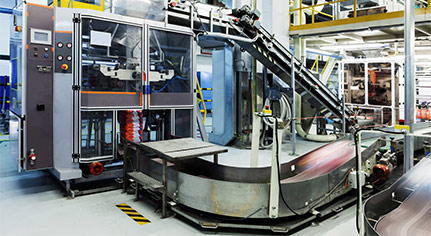After transitioning from the manual era to the mechanized era, the modern world is now in the era of automation, robotics, and computer science. In the industrial domain, where it has been established for a long time, the advancements in automation are significant, and the equipment used is becoming increasingly sophisticated.
The criteria that favor the introduction of automation in any given field are numerous and from different sources. In many cases, automation leads to a significant time savings, execution speed, and rationalization of installations, thereby enabling greater productivity.
Manual work precision varies from one operator to another (due to manual skills and professional qualifications) and over time (due to fatigue). Automation allows for the stabilization of this variability, ensuring the consistency of product quality. Automation has become an indispensable technology today due to its use in all manufacturing fields. It is important to understand its fundamentals and follow its evolution.
Automating a process involves managing it through a technological device. The intervention of an operator often remains necessary to oversee the overall process (setting guidelines), monitor installations, and take manual control of all or part of the system when needed.
This course, entitled "Basics of Automation," is aimed at students in the first year of a professional licensing program specializing in Mechanical Production and Industrialization (PMI) and Industrial Engineering and Maintenance (GIM). It enables learners to become familiar with the necessary tools to understand the fundamentals of automation, as well as the structure of an automated system and its basic components.
At the end of this course, the learner will also be able to:
- Model a combinational system in the form of Boolean expressions.
- Simplify and implement a set of control equations in the form of wired and/or
programmed logic.
- Identify a sequential system.
The Basics of Automation course is divided into a set of learning units that allow learners to acquire skills in using the basic concepts of automation in designing systems related to their discipline, such as designing combinational logic circuits. Additionally, it provides knowledge for designing sequential systems.
The criteria that favor the introduction of automation in any given field are numerous and from different sources. In many cases, automation leads to a significant time savings, execution speed, and rationalization of installations, thereby enabling greater productivity.
Manual work precision varies from one operator to another (due to manual skills and professional qualifications) and over time (due to fatigue). Automation allows for the stabilization of this variability, ensuring the consistency of product quality. Automation has become an indispensable technology today due to its use in all manufacturing fields. It is important to understand its fundamentals and follow its evolution.
Automating a process involves managing it through a technological device. The intervention of an operator often remains necessary to oversee the overall process (setting guidelines), monitor installations, and take manual control of all or part of the system when needed.
This course, entitled "Basics of Automation," is aimed at students in the first year of a professional licensing program specializing in Mechanical Production and Industrialization (PMI) and Industrial Engineering and Maintenance (GIM). It enables learners to become familiar with the necessary tools to understand the fundamentals of automation, as well as the structure of an automated system and its basic components.
At the end of this course, the learner will also be able to:
- Model a combinational system in the form of Boolean expressions.
- Simplify and implement a set of control equations in the form of wired and/or
programmed logic.
- Identify a sequential system.
The Basics of Automation course is divided into a set of learning units that allow learners to acquire skills in using the basic concepts of automation in designing systems related to their discipline, such as designing combinational logic circuits. Additionally, it provides knowledge for designing sequential systems.

- Dr.: Mohamed ASSABAA